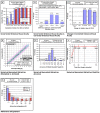One-Year Results of Photorefractive Keratectomy for Myopia and Compound Myopic Astigmatism with 210 nm Wavelength All Solid-State Laser for Refractive Surgery
- PMID: 37445353
- PMCID: PMC10342780
- DOI: 10.3390/jcm12134311
One-Year Results of Photorefractive Keratectomy for Myopia and Compound Myopic Astigmatism with 210 nm Wavelength All Solid-State Laser for Refractive Surgery
Abstract
Background: To examine the 12-month clinical and refractive outcomes of PRK performed with a UV all-solid-state laser.
Methods: The study included healthy patients with myopia and/or compound myopic astigmatism enrolled for refractive surgery and treated with PRK using a 210 nm wavelength, 2 kHz repetition rate, UV all-solid-state laser (LaserSoft, Katana Technologies GmbH, Kleinmachnow, Germany). All subjects were examined at baseline and after 1, 3, 6, and 12 months after the treatment with a slit lamp, refraction, visual acuity assessment (logMAR chart), tonometry, ophthalmoscopy, and corneal tomography with a Scheimpflug camera. The outcome measures considered were uncorrected (UDVA) and corrected (CDVA) distance visual acuities, refraction, central corneal thickness, and transparency. The efficacy, safety, predictability, and stability were determined.
Results: The study included 34 eyes of 19 patients. The mean UDVA changed from 1.20 ± 0.43 to -0.05 ± 0.10 logMAR at 12 months, and the mean CDVA changed from -0.03 ± 0.06 to -0.06 ± 0.09 logMAR, respectively. The mean spherical equivalent (SE) changed from -4.90 ± 2.12 D to -0.01 ± 0.40 D and was within ±0.50 D of the intended correction in 91% of eyes and within ±1.00 D in 97% of eyes at 12 months. No eyes lost lines of visual acuity, and 64% of eyes gained one or more lines.
Conclusions: PRK with the 210 nm wavelength, 2 kHz repetition rate, all-solid-state laser LaserSoft system proved to have good visual, refractive, and clinical outcomes after the follow-up at 12 months. The emerging gas-free, solid-state technology might be considered a valid alternative for the gas operating lasers for corneal refractive surgery.
Keywords: 210 nm wavelength; photorefractive keratectomy; refractive surgery; solid-state laser.
Conflict of interest statement
The authors declare no conflict of interest.
Figures

References
-
- Roszkowska A.M., Korn G., Lenzner M., Kirsch M., Kittelmann O., Zatonski R., Ferreri P., Ferreri G. Experimental and clinical investigation of efficiency and ablation profiles of new solid-state deep-ultraviolet laser for vision correction. J. Cataract Refract. Surg. 2004;30:2536–2542. doi: 10.1016/j.jcrs.2004.04.071. - DOI - PubMed
-
- Tsiklis N.S., Kymionis G.D., Pallikaris A.I., Diakonis V.F., Ginis H.S., Kounis G.A., Panagopoulou S.I., Pallikaris I.G. Endothelial cell density after photorefractive keratectomy for moderate myopia using a 213 nm solid-state laser system. J. Cataract Refract. Surg. 2007;33:1866–1870. doi: 10.1016/j.jcrs.2007.06.042. - DOI - PubMed
-
- Tsiklis N.S., Kymionis G.D., Kounis G.A., Naoumidi I.I., Pallikaris I.G. Photorefractive keratectomy using solid state laser 213 nm and excimer laser 193 nm: A randomized, contralateral, comparative, experimental study. Investig. Ophthalmol. Vis. Sci. 2008;49:1415–1420. doi: 10.1167/iovs.07-1280. - DOI - PubMed
LinkOut - more resources
Full Text Sources

